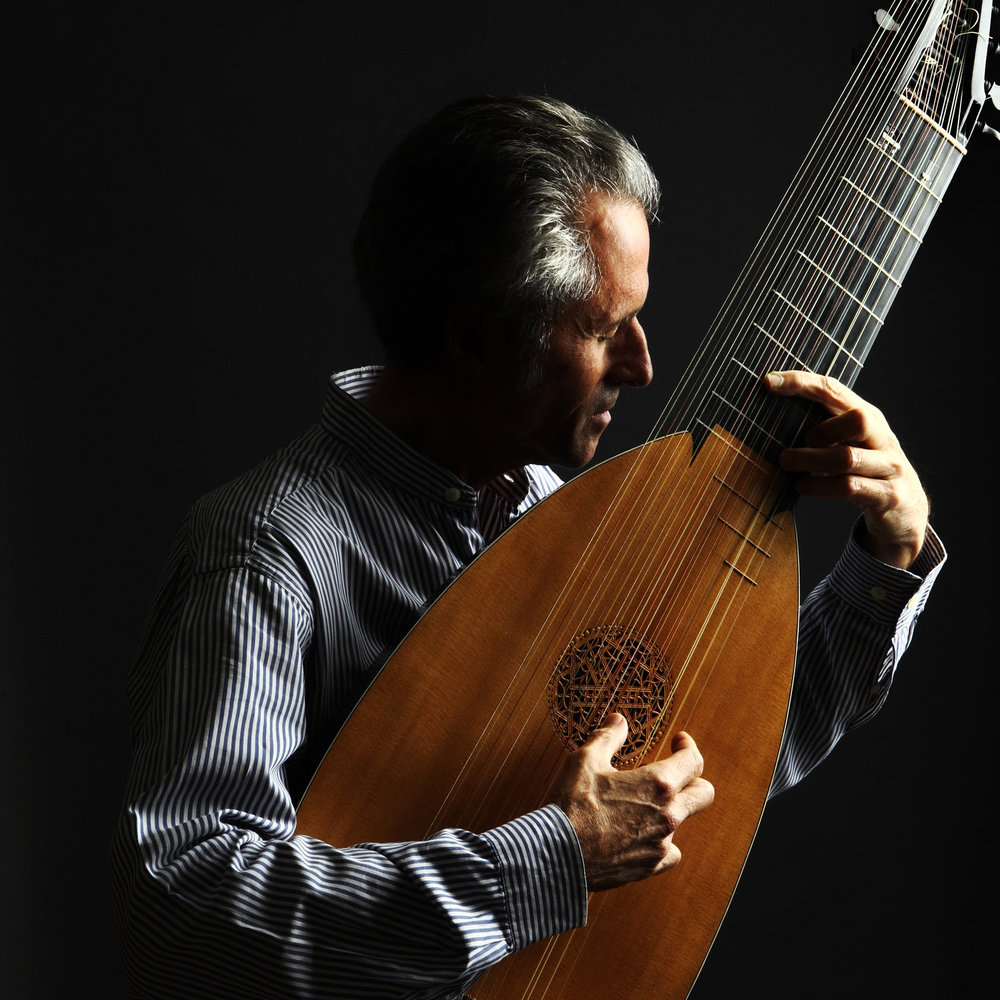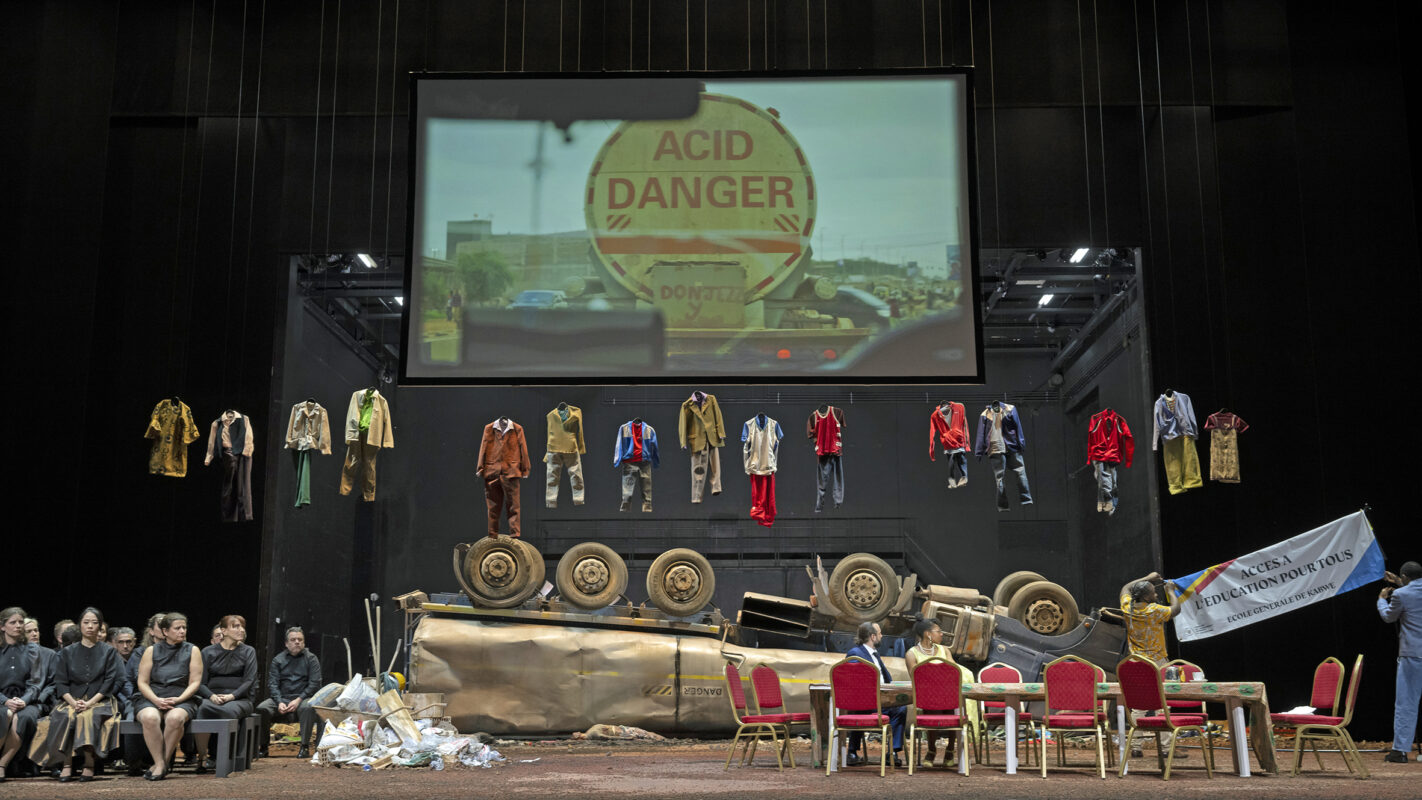Hopkinson Smith - "bringing music to life
Performer, creator and teacher, he is one of the leading figures in the revival of early music. He is taking up the challenge that is closest to his heart: restoring the earliest 16th-century works for lute.

Hopkinson Smith imparts a sense of balance to his students: "Authority comes from the music, not the person".
Photo: Philippe Gontier
With his new album, Hopkinson Smith breathes new life into the music of Spinacino and Dalza. Interview.
Hopkinson Smith, you've devoted your life to the lute... what drew you to this instrument?
Music has always been part of my life, ever since I was a child. I began by learning the piano, then went on to play various other instruments, such as the French horn, trumpet... It was in Europe that I really discovered plucked string instruments. At 19, I was fascinated by the guitar and the sound of Andrés Segovia. Then, at 22, I discovered the lute! My attraction to this instrument gradually developed: the shape, the visual, the tactile, the double strings, the sound, the inner resonance, the poetry... It's an instrument whose different expressive sensibilities attract me; it renews the spirit. The plucked string has always touched me. But it's the sound of the lute that speaks to me the most. To have this instrument in my hands is a tactile sensation for which I am grateful every day.
You began your lute studies in Europe. What did you learn from your great masters, Emilio Pujol and Eugène Dombois?
In the early '70s, I was studying musicology at Harvard, and there was no possibility of studying plucked strings in the United States. But Europe offered several options at the time. So I first went to Catalonia to take guitar and early music lessons with Emilio Pujol, who remains one of the most influential figures in my life for the way he communicated his conception of sound, his love for the art of music, and for human beings. Dombois's teaching at the Schola Cantorum in Basel introduced me to the enormous repertoire of the lute family. I thought I'd only be here a few years... and I'm still here (smiles). He passed on to me a way of listening and letting the string sound on the instrument, and shared this organic conception of music and states of mind, the search for this inner richness to be able to interpret a work, so my arrival in Europe was decisive.
As you often say, the lute is not an instrument, it's a family of instruments...
Yes, the big difference between lutes is the number of strings, which has increased over time. Depending on the repertoire I'm performing, the instrument I use is different. The classical lute of the early Renaissance has six courses (i.e. five double strings and one single string). The earliest sources of Italian (such as Spinacino and Dalza) and French music from the 16e century were performed with this lute. A century later, around 1600, the eight-choir lute was more suited to the performance of works from this period. Then in the 17the In the 19th century, the number of strings increased rapidly, culminating in the Baroque lute, which has between eleven and thirteen courses. This instrument is used by a large number of French composers. It was through this family of instruments that I entered the early music repertoire. I've also done a lot of projects with single-stringed instruments, like the classical guitar and the theorbo... But the double string provides a certain magic and resonance that the single string doesn't have.
How common is improvisation in the lute repertoire?
Absolutely. We're always looking for a style of improvisation that maintains a direct relationship with the repertoire we're accompanying or playing as a soloist. In Baroque music, there's a lot of accompaniment with basso continuo (the figured bass). Depending on the music being accompanied, the improvisation can be very elaborate and refined. In Renaissance dance music, there is a progression of chords that invite improvisation. A lot of recercare and fantasias are improvisation. I often make arrangements for solo lute, in which case the elaboration of the lines is also improvised. For example, the work by Marchetto Cara (Io non compro più speranza) included on my new album is, in fact, a song that I have arranged for solo lute. The original version is for four voices, and there's a version for voice and lute in Franciscus Bossinensis' book, which I used as the basis for my solo version with lute diminutions.
Improvisation is therefore an integral part of Baroque music. But is it given sufficient prominence in Europe's conservatories?
First of all, you need to acquire a good technical base for your hands, and a good ear for listening to different registers and instrumental voices. But what's just as important, and has been somewhat neglected by the first generations trained in conservatories, is improvisation and the instrumentalist's independence in different contexts. Because the way to improvise is not the same depending on whether the music was composed in 1500, 1550 or 1600... there may also be differences from one country to another. So I think it's essential to develop a sense of musical gesture and the conduct of harmony and polyphony, regardless of what's written in the score. There's a lot to be done, and one could spend one's entire education developing improvisation, but it must at least be part of a musician's training. As far as figured bass accompaniment is concerned, the performer is given a great deal of freedom and fantasy in improvisation, which will be of great benefit to those who wish to practice this discipline.
You teach at the Basel Academy of Music - Schola Cantorum Basiliensis. As a teacher, what would you like to pass on to your students? ?
A sense of balance... with students who want to make a "revolution", it's a question of showing them that authority comes from the music and not from the person, and proposing a disciplinary framework that allows them to develop their inner wealth. With shy students, I try to instill revolution in them (smiles), to broaden their musical panorama. Humility, a heartfelt attitude and passion are the key words.
Compared to when you began your musicology studies in the United States, has early music found its rightful place in teaching there today?
That's right. There are more opportunities for students wishing to embark on musical studies in the United States, and more and more very good musicians are graduating. But I have to say that the impetus still comes from Europe, because the cultural roots are much deeper there, and the presence of early music in life is different. Today, I'd say that Boston, Chicago, New York and San Francisco are among the best cultural centers for early music training in the United States. Some have a well-established independent activity.
You have had a long experience of chamber music, notably with Jordi Savall and the Hespèrion XXI ensemble, which you helped to found. In the 80s, you decided to devote yourself to the vast solo repertoire for plucked strings. Why did you make this choice?
As a person, you evolve. I really enjoyed playing with Jordi Savall. But at some point it became clear that if I really wanted to tackle the solo repertoires that touched me so deeply, I had to dedicate myself totally to that. You're a bit alone in this, but in a very creative and stimulating world. This solitude is necessary to cultivate what you're looking for. So I don't regret having made this transition. Today, I mainly perform solo, whether on guitar or other plucked instruments. In 2022, I gave recitals in Mexico, the United States and, more recently, Canada. But chamber music is not excluded. In recent years, I've often shared the stage with soprano Mariana Florès, and in 2015 we recorded an album on the songs of John Dowland. In 2023, I also have a few concerts planned in Germany with Sophie Klussmann.
Your recital at the Lutes et Théorbes festival in Geneva focused on works by Francesco Spinacino and Joan Ambrosio Dalza. You are working on the restoration of these scores from the 16th century.e century, in order to clarify their discourse. What is the major challenge in reconstructing and interpreting such texts?
The books by Spinacino (1507) and Dalza (1508) were published by Ottaviano Petrucci, the first publisher of polyphonic music, to whom we owe luxurious editions of highly polished works. But I was astonished to discover that the original edition of the Libro Primo and Libro Secondo Spinacino was unreliable. There are certain confusions and inconsistencies in the text: inexplicable movements of musical and instrumental voices, illogicalities, non sequiturs, missing measures... the job is to reconnect the lost bits, fill in the gaps, reconstruct a coherent version..., by trial and error... we'll never be what Spinacino intended in his compositions. But we have a choice: either to try to restore them in a comprehensible way so that they can be performed, or to leave them in their original state, and then we won't be able to play them. When it comes to early music, you have to rediscover the means people had at that time to bring the music to life. And the challenge is precisely to bring the music to life, whether it's ancient or modern. In a way, I took my musical "microscope" and performed "surgery" on the Spinacino pieces, with the aim of enhancing them, giving them dignity and making them convincing. Dalza's music, on the other hand, is very different, taking its inspiration from popular music and dances. At the start of his book (Libro Quarto) that the versions were rather simplified and unelaborate, and that he intended to compose a second book with more complicated versions... So I took the liberty of developing the dances in this sense, elaborating and extending them, also bearing in mind that the improvisation part is a fundamental element in dance.
Your new album Bright and Early will be released in February 2023. This is your first recording devoted to the works of Spinacino and Dalza...
Yes, the title Bright and Early evokes the day, the beginning of instrumental music for lute, as the books by Spinacino and Dalza contain the first printed music for lute and are the first sources of music for this instrument. Of the twenty-seven Recercare by Spinacino that require elaboration, I reworked eight for the album. As for Dalza, I reworked some ten of the thirty or so existing works. There's also a project to publish several arrangements, adaptations and versions of this Italian repertoire with a Parisian publishing house. But it's a long-term project...
Album Bright and Earlyreleased February 2023 by Naïve Records








